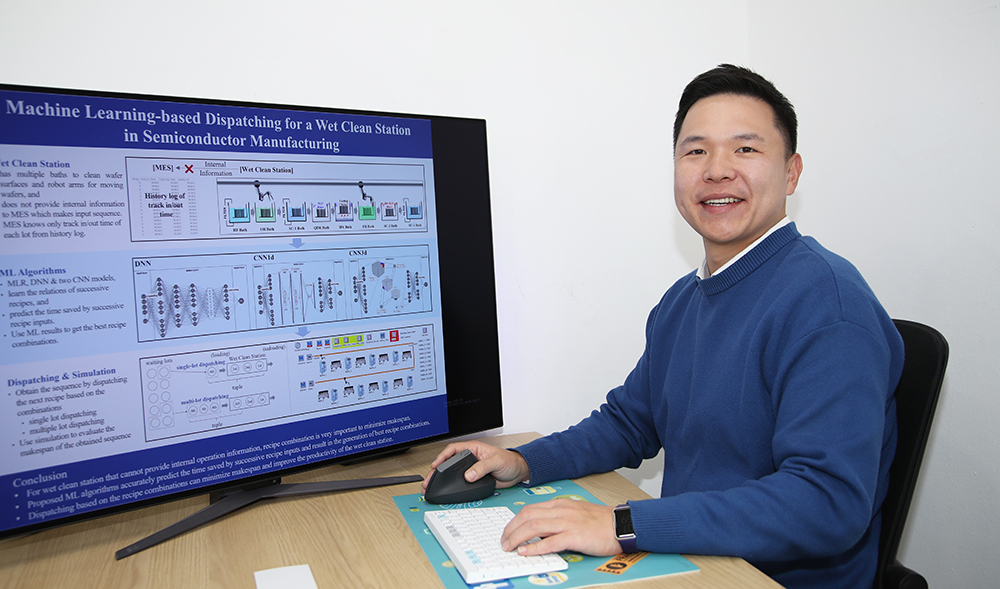
Machine learning-based dispatching for a wet clean station in semiconductor manufacturing

The concept of cyber manufacturing has become a critical element in semiconductor fabrication environments, where automation and systemization are integral, for addressing the growing complexity of processes and facilitating predictive capabilities through data integration. This study deals with the dispatching problem to minimize makespan at a wet clean station in semiconductor fabrication using artificial intelligence-enabled manufacturing control techniques. The wet clean station is comprised of sequential chemical and rinsing baths for cleaning wafer lots and multiple robot arms for lot handling. In the station, wafer lots are sequentially immersed in several baths for cleaning to eliminate residual contaminants and stains that cause defects on wafer surfaces. The station can process various types of products, and the specific order of immersion differs depending on the product type. Unlike typical dispatching problems, the information required for dispatching, such as processing times and sequences inside the station, is not available. The only available data are historical logs that record when each lot enters and leaves the station. However, even when cleaning the same product type, the duration that lots spend in the station may vary based on the combination of product types being cleaned simultaneously and the settings of the station. Thus, using the time records, this study proposes a dispatching method based on machine learning models (multiple linear regression, deep neural network, and convolutional neural network). The proposed algorithms were evaluated and verified by comparing them with CPLEX solving a mixed integer programming and dispatching methods used in a semiconductor fab in Korea. Through this experiment, we observed that the proposed models can provide dispatching solutions that are practical and effective in a rapidly changing production setting. These models have the potential to enhance the capacity of a wet clean station and will contribute to artificial intelligence-based manufacturing system control.
* Reference
- Authors (Pusan National University): Jun-hee Han (Department of Industrial Engineering)
- Title of original paper: Machine learning-based dispatching for a wet clean station in semiconductor manufacturing
- Journal: Journal of Manufacturing Systems
- DOI: https://doi.org/10.1016/j.jmsy.2024.09.018
- Lab website: https://sites.google.com/view/pnusmartfactorylab/home

 938한준희교수1.jpg
(454KB)
938한준희교수1.jpg
(454KB)